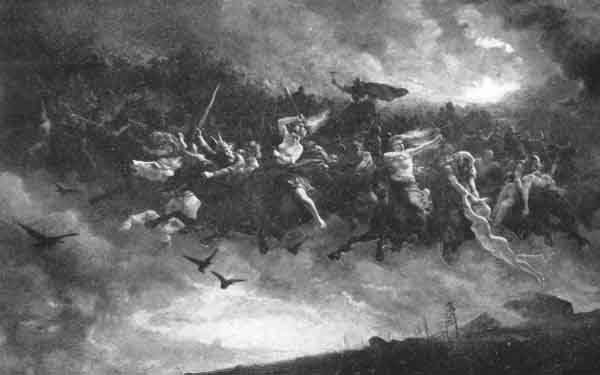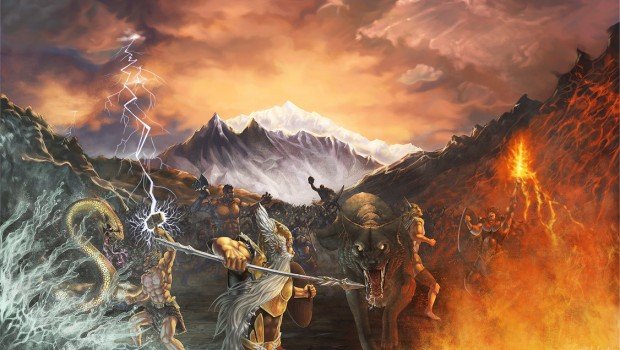Send Message to
Ragnarök - “The Doom of the Gods”

Ragnarok (Old Norse Ragnarök, “The Doom of the Gods”) is the name the pre-Christian Norse gave to the end of their mythical cycle, during which the cosmos is destroyed and is subsequently re-created. “Ragnarok” is something of a play on words; an alternate form, which sounds almost identical when spoken, is Ragnarøkkr, “The Twilight of the Gods.” The significance of this variation will be discussed below.
But first, here’s the tale itself:
The Doom of the Gods
Ominous prophecies and dreams had long foretold the downfall of the cosmos and of its gods and goddesses along with it. When the first of these prophesied events came to pass – the beloved god Baldur was killed by Loki and consigned to the underworld – the gods had to face the fact they could no longer escape their tragic destiny. They prepared as well as they could. Odin took a great deal of time and care selecting the ablest human warriors to join him in the final battle against the world-devouring giants. But, deep down, they knew that all of their desperate actions were in vain.
In Midgard, the realm of human civilization, people abandoned their traditional ways, disregarded the bonds of kinship, and sank into a wayward, listless nihilism. The gods weren’t exactly innocent of these same charges, however. They had broken oaths and fallen short of their expectations of one another on many occasions. (See, for example, The Fortification of Asgard and The Binding of Fenrir.) Three winters came in a row with no summer in between, a plodding, devastating season of darkness and frigidity which the prophecies had called the Fimbulvetr (or fimbulwinter, fimbulvinter) (“The Great Winter”).
At last, the pseudo-god Loki and his son, the dreaded wolf Fenrir, who had both been chained up to prevent them from wreaking further destruction in the Nine Worlds, broke free of their fetters and set about doing precisely what the gods who had imprisoned them had feared. Yggdrasil, the great world-tree that holds the Nine Worlds in its branches and roots, began to tremble.
The far-seeing Heimdall, the watchman of the gods’ fortress, Asgard, was the first to spy a vast army of giants headed for the celestial stronghold. Among the gruesome mass was the gods’ fickle friend, Loki, at the helm of the ship Naglfar (“Ship of the Dead”). Heimdall sounded his horn Gjallarhorn (“Resounding Horn”) to alert the gods, who were no doubt alarmed and despairing.

The giants set about destroying the abode of the gods and the entire cosmos along with it. Fenrir, the great wolf, ran across the land with his lower jaw on the ground and his upper jaw in the sky, consuming everything in between. Even the sun itself was dragged from its height and into the beast’s stomach. Surt, a giant bearing a flaming sword, swept across the earth and left nothing but an inferno in his wake.
But, like the heroes of a Greek tragedy, the gods fought valiantly to the end. Thor and the sea serpent Jormungand slew each other, as did Surt and the god Freyr, and likewise Heimdall and Loki. Odin and Tyr both fell to Fenrir (also called “Garmr” in some texts), who was then killed by Vidar, Odin’s son and avenger.
At last, in the ultimate reversal of the original process of creation, the ravaged land sank back into the sea and vanished below the waves. The perfect darkness and silence of the anti-cosmic void, Ginnungagap, reigned once more.
